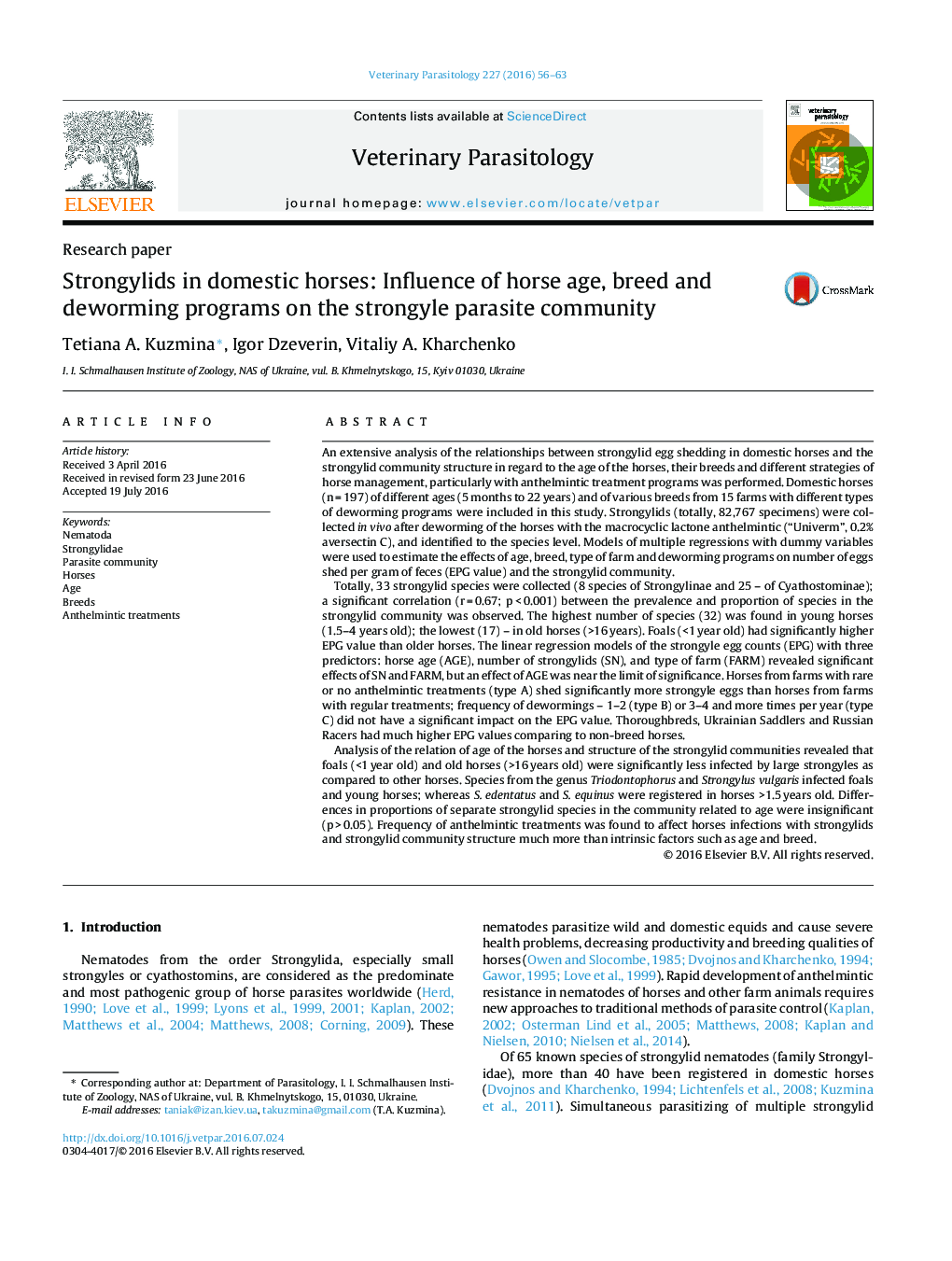| کد مقاله | کد نشریه | سال انتشار | مقاله انگلیسی | نسخه تمام متن |
|---|---|---|---|---|
| 5802079 | 1555649 | 2016 | 8 صفحه PDF | دانلود رایگان |

- Analysis of the relationships in horse infection with strongylids and horse age, breeds and different management strategies was performed.
- The effect of horse age on strongyle egg shedding (EPG) in horses was near the limit of significance.
- 33 strongylid species were collected; a correlation between the prevalence and proportion of species in the strongylid community was observed.
- The highest number of species (32) was found in young horses (1.5-4 years old); the lowest (17) - in old horses (>16Â years).
- Frequency of treatments was found to affect infections on the community structure much more than age and breed.
An extensive analysis of the relationships between strongylid egg shedding in domestic horses and the strongylid community structure in regard to the age of the horses, their breeds and different strategies of horse management, particularly with anthelmintic treatment programs was performed. Domestic horses (n = 197) of different ages (5 months to 22 years) and of various breeds from 15 farms with different types of deworming programs were included in this study. Strongylids (totally, 82,767 specimens) were collected in vivo after deworming of the horses with the macrocyclic lactone anthelmintic (“Univerm”, 0.2% aversectin C), and identified to the species level. Models of multiple regressions with dummy variables were used to estimate the effects of age, breed, type of farm and deworming programs on number of eggs shed per gram of feces (EPG value) and the strongylid community.Totally, 33 strongylid species were collected (8 species of Strongylinae and 25 - of Cyathostominae); a significant correlation (r = 0.67; p < 0.001) between the prevalence and proportion of species in the strongylid community was observed. The highest number of species (32) was found in young horses (1.5-4 years old); the lowest (17) - in old horses (>16 years). Foals (<1 year old) had significantly higher EPG value than older horses. The linear regression models of the strongyle egg counts (EPG) with three predictors: horse age (AGE), number of strongylids (SN), and type of farm (FARM) revealed significant effects of SN and FARM, but an effect of AGE was near the limit of significance. Horses from farms with rare or no anthelmintic treatments (type A) shed significantly more strongyle eggs than horses from farms with regular treatments; frequency of dewormings - 1-2 (type B) or 3-4 and more times per year (type C) did not have a significant impact on the EPG value. Thoroughbreds, Ukrainian Saddlers and Russian Racers had much higher EPG values comparing to non-breed horses.Analysis of the relation of age of the horses and structure of the strongylid communities revealed that foals (<1 year old) and old horses (>16 years old) were significantly less infected by large strongyles as compared to other horses. Species from the genus Triodontophorus and Strongylus vulgaris infected foals and young horses; whereas S. edentatus and S. equinus were registered in horses >1.5 years old. Differences in proportions of separate strongylid species in the community related to age were insignificant (p > 0.05). Frequency of anthelmintic treatments was found to affect horses infections with strongylids and strongylid community structure much more than intrinsic factors such as age and breed.
Journal: Veterinary Parasitology - Volume 227, 30 August 2016, Pages 56-63